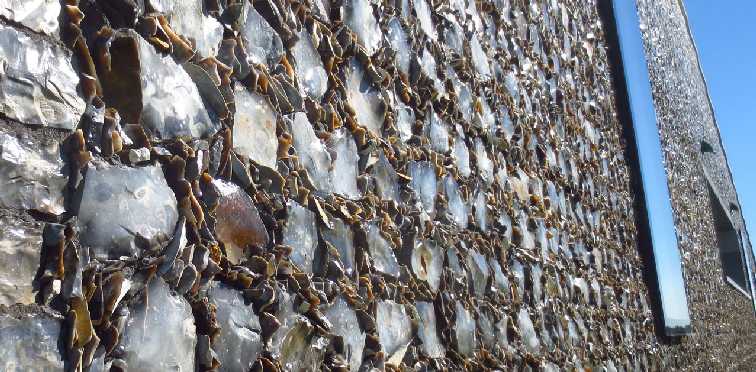
This residential construction of 465 sq.m. / 5005 sq.ft. plus an annex of 115 sq.m. / 1237 sq.ft. (the annex is essentially a self-contained two level studio apartment) known as Flint House, was commissioned by Lord Jacob Rothschild and was built on the grounds of his six thousand acre estate, Waddesdon Manor Estate in the Vale of Aylesbury, Buckinghamshire, England.
Apart from helping to preserve the ancient artisanal skill of flint working, the project is an architectural triumph.

Designed by the London based Architectural practice, Skene Catling De La Peña and led by Charlotte Skene Catling and Jaime de la Peña, the project won the prestigious Royal Institute of British Architects, House of the Year award for 2015. Rejigit conveys its congratulations.
Rising from its rural setting and blending with the sky in what was described by RIBA judges as a marvel of geological evolution and construction. The judges also commented that this is not an object in the landscape, but is of the landscape.

The construction design concept is reminiscent of the Ziggurats which were massive structures built in the ancient Mesopotamian Valley and took the form of step terraced pyramids of successively receding levels.
The design was also inspired by the seam of flint the house sits on and the surrounding ploughed chalk fields. The sculptural buildings are clad in 80 tons of flint handpicked from five English quarries and graded into eight colour tones. The facade slowly gradates from the darker and rougher flint at the base to refined smooth white chalk blocks at the upper levels.
A notable feature of the construction area is the convergence of several streams in the immediate vicinity and the architectural design embraces the natural occurrence by way of a grotto within the house structure with a stream running through it.
Stonework is by David Smith’s company, The Flintman Co Ltd and is of unparalleled craftsmanship.

Hand breaking (knapping) the flint required the work of six artisan tradesmen for eight months. The broken flint nodules were laid into black lime mortar with flint shards placed between the nodules.